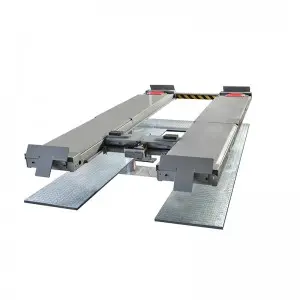[Cylinder]Exploring the Versatility of the Cylinder: A Key Shape in Mathematics, Engineering, and Everyday Life
****
The cylinder is a remarkably versatile and significant geometric shape that has captivated mathematicians, engineers, and designers for centuries. Defined as a three-dimensional solid consisting of two parallel circular bases connected by a curved surface at a specific distance from the center, the cylinder serves as a fundamental structure in many fields. This article delves into the various aspects of the cylinder, exploring its mathematical properties, practical applications in engineering, its prevalence in natural forms, and its role in art and design.
Mathematical Properties of the Cylinder
In mathematics, the cylinder is celebrated for its properties and the relationships between its dimensions. The most common type of cylinder is the right circular cylinder, which is defined by its height (h) and the radius (r) of its bases. The volume (V) of a cylinder can be calculated using the formula:
\[ V = \pi r^2 h \]
where \( \pi \) (approximately 3.14159) is a constant representing the ratio of the circumference of a circle to its diameter. The surface area (A) of a cylinder comprises the areas of its two bases and the area of the curved surface, given by the formula:

Exploring the Versatility of the Cylinder: A Key Shape in Mathematics, Engineering, and Everyday Life
\[ A = 2\pi r(h + r) \]
These calculations illustrate the foundational geometric principles that underlie the cylinder’s structure, enabling deeper explorations in fields such as calculus and geometry.
Engineering Applications
The cylinder’s shape is foundational in various engineering disciplines. In mechanical engineering, cylinders are critical components in engines, pistons, and hydraulic systems. For instance, the cylinders in an internal combustion engine house the pistons, which convert fuel into mechanical energy through a series of controlled explosions. The strength and durability required in these applications necessitate careful selection of materials and precise engineering designs to ensure efficiency and safety.
In civil engineering, the cylindrical shape is commonly employed in columns and supports. These vertical structures are designed to bear significant loads, distributing weight evenly and providing stability to buildings and other infrastructures. Civil engineers often use reinforced concrete cylinders due to their ability to withstand compressive forces, making them indispensable in modern construction.
Natural Occurrences of the Cylinder
The cylinder is not only a man-made construct but also a shape frequently observed in nature. Many natural objects, from tree trunks to certain types of shells and even some fruits, possess cylindrical forms. For instance, the trunk of a tree demonstrates a uniform cylindrical shape that maximizes strength and stability while minimizing the amount of material needed to support the tree’s branches and foliage.

Exploring the Versatility of the Cylinder: A Key Shape in Mathematics, Engineering, and Everyday Life
Additionally, cylindrical shapes are found in living organisms, where they serve various functions. For example, blood vessels like arteries and veins are essentially cylindrical tubes that efficiently transport blood throughout the body. The cylindrical geometry helps minimize resistance and maintains optimal flow rates, showcasing nature’s preference for efficient shapes in biological systems.
The Cylinder in Art and Design
Beyond mathematics and engineering, the cylinder also plays a significant role in the realms of art and design. Artists and designers often utilize cylindrical forms to create visually appealing sculptures, furniture, and architectural elements. The elegance of a cylinder’s shape can evoke feelings of harmony and balance, making it a popular choice in various artistic endeavors.
For instance, the design of many modern buildings incorporates cylindrical features, such as towers or columns, which can create striking visual impacts and serve functional purposes. Similarly, in product design, cylindrical objects such as bottles and cups are not only practical but also comfortable to hold, emphasizing the ergonomic advantages of this shape.

Exploring the Versatility of the Cylinder: A Key Shape in Mathematics, Engineering, and Everyday Life
Conclusion
The cylinder stands as a testament to the interconnectedness of mathematics, engineering, nature, and art. Its properties and applications extend across multiple disciplines, making it an essential subject of study and admiration. As we continue to explore the nuances of this geometric shape, the cylinder’s influence is likely to remain significant, inspiring innovation and creativity in our increasingly complex world. In recognizing the cylinder’s versatility and importance, we gain a greater appreciation for the shapes that underpin both the natural and designed environments around us.quick car jack lift
